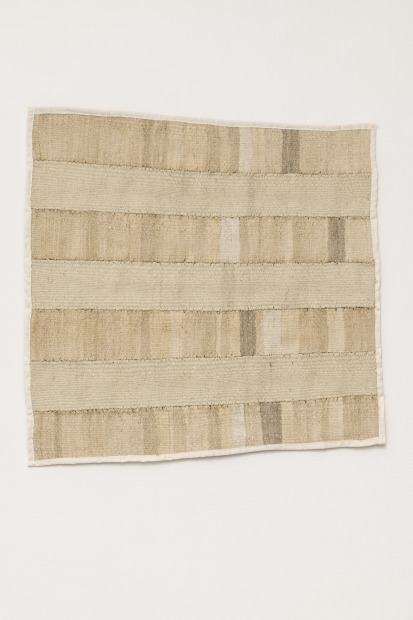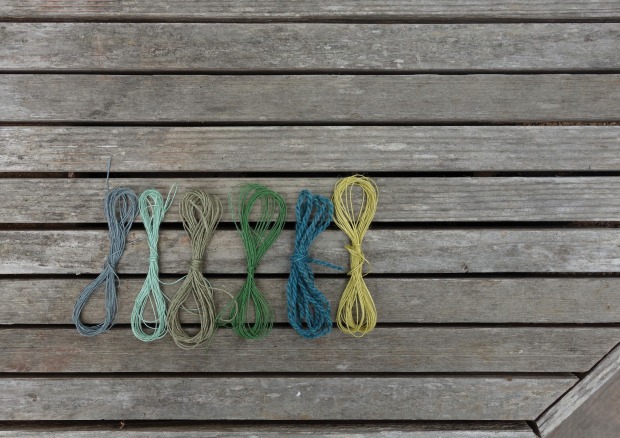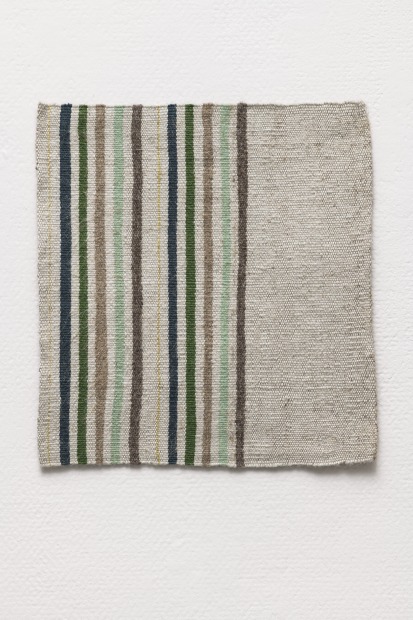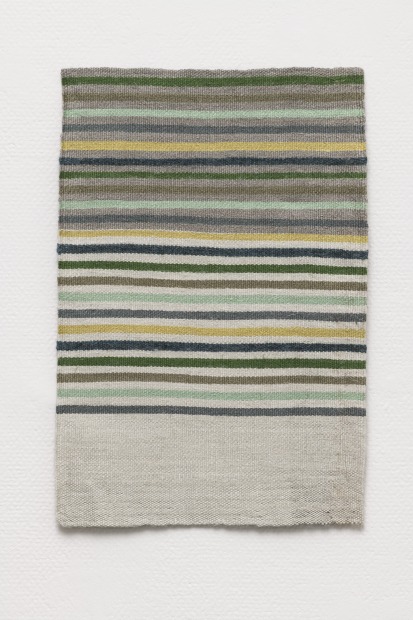 eyckgalleryartistsexhibitionsnewspublications
eyckgalleryartistsexhibitionsnewspublications

Giuseppe Mongiello
approximately the length of the weaver’s arm, with
stripes the width of their hand
courtesy Helen Mirra
I met Helen Mirra this summer, at the opening of her exhibition Variable Weather at andriesse eyck.
A year or so earlier, I had been asked if I knew someone who could translate a text she had written. I promised to read the piece and offer a suggestion. The text was ‘Standard Incomparable’, an invitation to participate in a project and submit weavings, woven from natural, local materials, that match the dimensions of the human body (the lenght of the weaver's arm for the piece, and the width of their hand for horizontal stripes) for an exhibition, and receive in return a piece made by a different participant. I was interested in the project because it presented opportunities for unexpected results generated by chance. The language seemed a little too complicated to me, because she was attempting to be very exact. It was, however, the reason why I immediately made a connection with conceptual art. I decided to offer my services as translator, and immersed myself in Mirra’s work.
I had come to feel an affinity with her way of thinking, which proved well-founded when we met: the precision, subtlety and humility of her presented works confirmed my expectations. It was interesting to note that, although we are from different generations, we talk about the same artists. One of her great examples is Douglas Huebler, and his Variable Works project in particular in which, for a temporary exhibition at Konrad Fischer in Dusseldorf and Galleria Sperone in Turin (1971), he hitch-hiked from France venturing either north or south, towards one of the two galleries, flipping a coin each morning to determine the direction he would take. The documentation of his northbound journey was exhibited at Konrad Fisher, and that of his southbound route at Sperone. What makes Huebler so important to me, is the manner in which he uses photography, places such emphasis on the temporal dimension, and explored the entire system of measuring and determining location. He was the first to do so in such a way. And we also talked about Ad Reinhardt, John Cage, Japan, and walking.
Mirra’ work is walking and weaving. Walking not as meditation, although it always effectuates a particular frame of mind, but as an activity that cultivates an awareness of your physical abilities and limitations. She leaves no trace in the places where she walks, nor strives to produce heroic images. No, it is all minimal and invokes reflection.
Mirra walks mostly in nature, less frequently in cities, and uses materials and images that she encounters during these walks in a very subtle way. A great deal of wood, a limited colour spectrum, references to railways, measuring systems (the distance between the sleepers that support the rails or the length from her hand to her elbow), covering and protection. The works that she presented in the summer exhibition at andriesse eyck are all entitled 'Paragraf'. They are wooden supports, meticulously constructed and painted with casein paint (derived from milk) made by the artist, and partially covered with green wool, from military blankets. You can look at the works extremely closely and be especially struck by their construction, texture, exactitude and colour. Viewed from a distance, they become small-scale paintings, abstract and restrained in both hue and form. Nothing overwhelms you, simply detail. I was reminded of the single grain of sand, in which you see the world in its totality.
The title of the series of works made clear that the focus is always on small steps; ‘paragraf’ refers to a constructed piece of writing but is, of course, usualy an element in a longer composition.
The day after I met Mirra she began her journey to Merano, where she was to exhibit her work and Standard Incomparable. At that point, she did not know which parts of the trip she would make on foot, or by train. She had three weeks to make the journey, and intended to throw a coin each day, and let chance decide for her.
In the meantime, I know that everything went smoothly, she reached Merano on time, and without stress.
The title of her current exhibition is Voluntary Weathering. Which, again, is highly suggestive: weathering is defined as the various processes – such as temperature and flora – that cause exposed rock to decompose. Things you observe during walks. And she is able consciously to transmute those observations into documents that invite contemplation.
Marja Bloem
August 2017
 eyck
eyck

.jpg)


.jpg)




